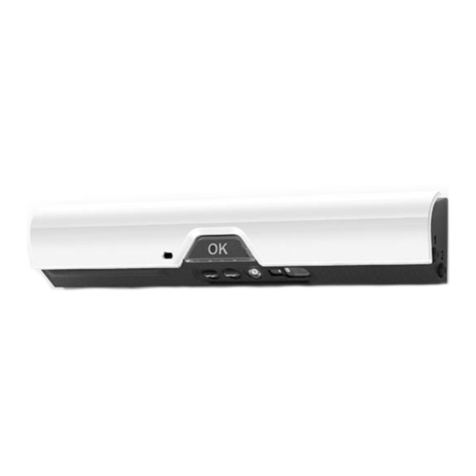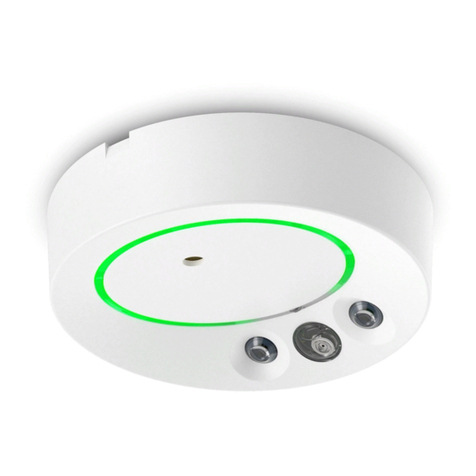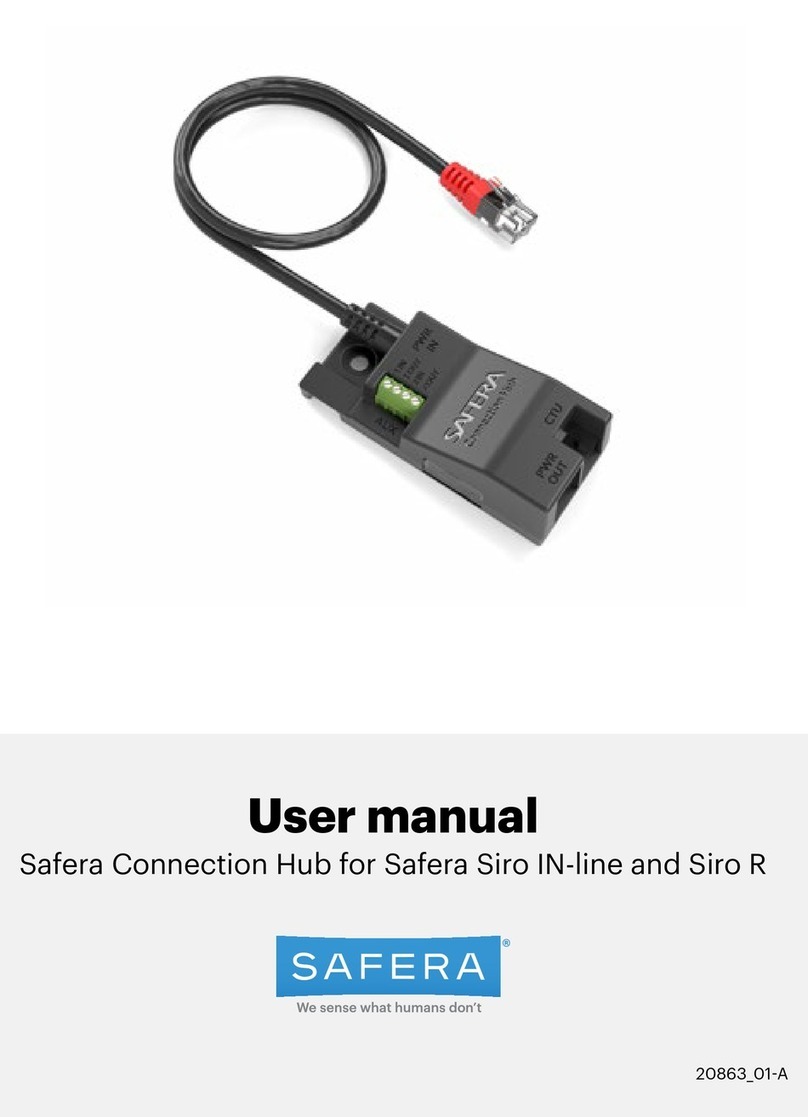1918
Problem Remedy
Problems with checking
the working order: the
cooker power does not
shut down
• Retry with the same cooker plate and ensure that the
plate is set on highest power level.
• With an induction cooker use a suitable dish so that the
cooker is consuming power.
• Check all wiring of the Power control unit Ⓒ.
Cooker cannot be turned
on after pressing the OK
button ❸.
See user manual chapters 3.2 or 3.3. If the problem persists,
the appliace might be faulty. Press the OK button ❸to ind
out the problem type by the indicator light ❹:
Indicator light ❹blinks in blue:
• Blinks once: Problem with wireless connection.
• Blinks twice: Problem with power control unit Ⓒ.
• Blinks three times: Power control unit Ⓒover-heating.
Indicator light ❹blinks in yellow:
• Blinks once: Probem with sensors ❻.
• Blinks twice: Problem with sensor unit Ⓐ
• Blinks three times: Faulty installation position of the sen-
sor unit Ⓐ
Faulty installation
position of the sensor
unit Ⓐ.
Sensor unit Ⓐ will automatically recognize its’
installation position during the irst time the cooker
is used for cooking. After the auto-recognition is
completed, the stove guard will prevent the use of
cooker and oven if the sensor unit Ⓐis removed from
its’ original installation position. To enable use of the
cooker, place the sensor unit Ⓐ back to the mounting
bracket Ⓑ. If the problem persists, the auto-recognition
might not have been successful. Ensure the correct
position of the sensor unit Ⓐ(see installation step
2/2) and manually reconnect the wireless connection
according the installation manual chapter 4.2. The fault
should be then reseted automatically in two minutes.
The wireless connection
is not working.
Go into the Manual adjustment mode and set up the
wireless connection manually, see chapter 4.
The sensor unit Ⓐis not
responding to any button
and none of the indicator
lights are lit.
Ensure that the batteries are not empty. Check the correct
position of the batteries marked on the bottom of the
battery case.
The appliance turns
o the power from
the cooker, but the
power comes back on
immediately.
Make sure that the power control unit Ⓒis connected
correctly – in other words, the cooker is connected to the
OUT cable.
3. Installation troubleshooting 4.Manual adjustment mode
To enable the fast installation, the default settings of Safera Airis are suitable for the
most typical installations. In case you need to install the sensor unit outside the de-
fault installation dimensions or replace the cooker, sensor unit or power control unit
in the original installation, you need to enter the manual adjustment mode.
Press the adjustment button ❷for 5 seconds and you will enter the manual adjust-
ment mode 1. You may move to the next mode by pressing OK-button ❸:
Mode Setting Indicator light ❹
Mode 1 Alarm limit settings Lit white
Mode 2 Manual setup of the wireless
connection
Blinking purple-blue
Mode 3 Manual calibration of the
cooker type
Blinking yellow-green
Mode 4 Testing and adjusting AUX-con-
nection
Blinking white (normal AUX-mode), or
Blinking red (inversed AUX-mode)
4.1 Mode 1: Alarm limit settings
When the indicator light ❹ will lit white, you may adjust the alarm limit:
1. Check the closest recommended alarm limit from the reference table 1 below.
2. Adjust the alarm limit accordingly (the default setting is 6):
• You may raise the alarm limit (+1): press the adjustment button 2.
• You may lower the alarm limit (-1): press the adjustment button 1.
3. After adjusting the the alarm limit, the new alarm limit is indicated as shown in the
table 2 and the stove guard will automatically exit the manual adjustment mode.
To move to the manual adjustment mode 2 without changes in mode 1, press OK but-
ton ❸.
Table 1: Recommended alarm limit reference table based on the location of the cook-
er and the installation height. The range is 1 - 12 (1 = reacts fastest, 12 = reacts slowest).
Recommended
alarm limit
Installation height:
Mounting on the wall
Installation height:
Mounting under the cooker hood
3 - 85 - 95 cm
4 - 75 - 85 cm
5 45 - 50 cm 65 - 75 cm
6* 50 - 60 cm 55 - 65 cm
7 - 45 - 55 cm
* default































